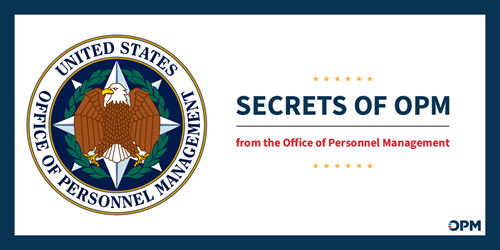Shutdown Reflections

By Scott Kupor, Director, U.S. Office of Personnel Management
November 14, 2025
With the government shutdown behind us, I thought I’d share a few reflections.
First, some definitions.
The shutdown basically prohibited the government from performing activities that receive funding via appropriated funds, unless those activities are deemed “excepted” (more on that in a second). This is largely the salaries of the people who work for government and the expenses associated with procurement or other discretionary activities.
However, most of government spending is not from appropriated funds; only about one-quarter of total spend comes from this.
The other three-quarters of government spend comes from mandatory spending programs (Social Security, Medicare, Medicaid, government retirement annuities, etc.) and interest on the debt. None of these dollars are impacted during a shutdown. Checks to Social Security recipients, payments to health care providers, and payments to annuitants continued to flow in the latest shutdown.
The employees working on these mandatory spending programs – about 1.3 million people, or about 62% of the total civilian workforce – were deemed exempt. That means they show up to work every day and get paid. For this group of employees, the shutdown looked no different than their non-shutdown activities – for the most part.
Within the appropriated activities, employees are further divided into furloughed and excepted. Furloughed employees were forced to do nothing during the shutdown; literally, they are prohibited from even responding to emails (other than in very limited circumstances). There were about 400,000 furloughed employees, or about 20% of the workforce. Furloughed employees do not get paid during the shutdown, although they are entitled to back pay if Congress determines to appropriate such monies post-shutdown (which is the case today).
Excepted employees are deemed to be working on activities that are permissible during a shutdown – e.g., national security, air traffic control, TSA agents, and some other functions deemed critical. There were about 400,000 exempted employees, the remaining 20% of the workforce. This group is treated the worst – they receive no pay (they receive the same backpay as furloughed employees) but are required to do their regular jobs.
So, in very simple terms, the shutdown put 800,000 federal employees in a really tough situation. None of them received paychecks for 40+ days, despite the fact their mortgage payments, car payments, grocery bills, etc., were all still due. And half of them (the excepted group) couldn’t even attempt to find other sources of income because they were required to work full time!
In addition to the massive life disruptions for these employees and the other major inconveniences created (e.g., flight cancellations), what did this cost the American taxpayer in direct employment costs? Well, backpay for those 400,000 furloughed employees – who were legally prohibited from doing any work (through no fault of their own) – will likely run about $5 billion.
How did we get here? Because of a 40+ year old legal opinion (the Civiletti opinion, aptly named for the author, Benjamin Civiletti, then-Attorney General under the Carter Administration). The previous practice had been to not have government agencies close during shutdowns, but to advise against undertaking new, non-essential obligations (like new contracts or travel). The Civiletti opinion re-interpreted the Anti-Deficiency Act (the ADA) – which basically says the government can’t spend dollars that are not appropriated – to require government agencies who relied on appropriated funds “to terminate functions in an orderly way,” even where the lapse in appropriations was expected to be temporary, other than in limited circumstances (e.g., law enforcement, national safety, etc.).
And why can’t we pay the 400,000 excepted employees who are in theory doing work that we have deemed appropriate, or why can’t any of the 400,000 furloughed employees offer to help out during a shutdown?
Well, Civiletti in a second opinion about nine months after the first one, said that the ADA also prohibits the government from receiving “voluntary services,” again subject to the narrow exceptions above. But the practice from Congress has always been that these individuals ultimately receive backpay when the government re-opens (which is again the case in the current shutdown), so it’s a bit of a non-sequitur to argue that they are providing voluntary services when the practice has been to provide full backpay. Arguably, Congress could determine not to do so, but good luck finding a majority of representatives who are going to vote affirmatively on that bill!
When you put all of this together, the whole shutdown theatrics are just that – form over substance. We disrupt the livelihood of federal employees, we disrupt the daily lives of all Americans, we waste taxpayer dollars by prohibiting furloughed employees (who ultimately get paid) from doing their jobs – all for what? I think the answer is pretty clear – there is no “what.”
Luckily this week common sense ultimately prevailed for the eight Democrats who recognized the insanity and put an end to the nonsense. Federal employees can now go back to working on behalf of the American people – at least for now!



